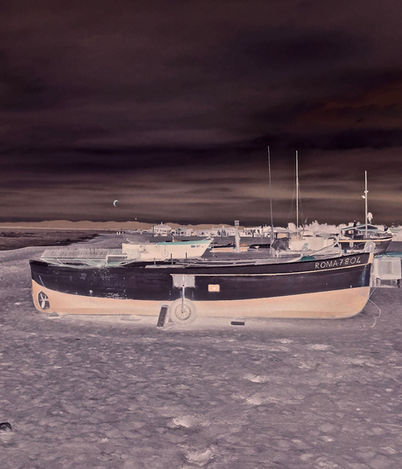2021
TRAVEL MEMORIES
I am a curious traveler and I like to know every country or city I go to, trying to discover the most hidden or unusual aspects but at the same time I understand when a place, whether it be a street, a square or a monument, totally overwhelm me even if be it banal or touristy. For how many photos I take, it will be that one image that has overwhelmed me to represent the city or the place together with the emotional sensation I feel and that I can represent with a color. Perhaps in this process, my particular way of observing and seeing helps me: having no field of vision, I am trained to focus my attention on a single element, letting the rest remain blurred and, in the case of my works, absorbed by a color that best represents the feeling conveyed at that particular moment. Therefore for me Lisbon is the saudagi: the Prussian blue; Tibet an embracing spirituality: the Tibetan red; Berlin the damage: black; Seville the intense light: the ocher yellow and Budapest the dream: the clear blue of the Danube that transmits a waltz for two.
2021
NOSTALGHIA
In my life, situations with a strong emotional impact, be they good or bad, deprive me for a moment or forever of the visual memory and what remains is a negative printed image where I recognize the situation or the place without being able to put it clearly focused: it is as if the colors dissolve and the image remains in its negative absorbed by a single color that best represents it. Nostalghia wants to be the sincere representation of how I remember certain places or situations, the sadness that surrounds you when the memories are blurred and vague and you live in the fog of your past and your present but also the attempt to create something beautiful and special in this way of seeing and remembering so distinct from normality.
2016 / 2017
NAUSEA
We are living an age marked by the “I have - many things - to do” target, by a deep optimism created by the scientific and technological evolution opening new horizons for human beings who are always more busy in extending life expectation and assuring their own descendance, or simply spinning web relationships, global virtual friendships, by showing their image wisely counterfeited through plastic surgery or simply photo-shopped. Aware the well-being doesn’t provide with happiness, yet people from major developed countries are still to glorify their own image and rapidly forget their own identity. In the common elation marking this new “Renaissance”, where anyone should be allowed to achieve popularity – the only real target to exist – to think is considered totally useless and perhaps a negative value, a place for jinxes and defeatists.This Aperitif Era, where life appears vainly filled by what is unable to provide it with completion, gives me a sense of discomfort that reminds me of Sartre’s description of Nausea. The feeling of tediousness or, more precisely, melancholy coming together with a unsatisfying satiety testing, leads to an estate of uneasiness and stupefaction, to an apparently senseless sadness where the uncanny leads the human being to face a hoaxed existence and, there you are, Nausea. Being nearly eighty year since the novel was written, we cannot be surprised that Nausea has been a little forgotten nowadays. Introducing the virus of incoherence in an idea of life that today, like in the 30s, is built on the coherence and rationality concept, Sartre reveals the bad faith attitude of modern human beings, spotting what needs to be hidden: the pathologic sense of normality. Paper fragments with written sentences from the novel, as if they were casually inserted, are floating and no one can pick them up nor delete.
“…This morning, at a quarter past eight, as I was leaving the Hôtel Printania to go to the library, I tried to pick up a piece of paper lying on the ground and didn't succeed. That's all, and it isn't even an event. Yes, but, to tell the whole truth, it made a profound impression on me: it occurred to me that I was no longer free.”
2013
BLACK OVER BLACK
A grate to defend against fear, a grate to glimpse, a grate to dream, a grate to cry, a grate to regret, a grate as a physical and mental element, as a solution for not living .......... a grate to tell a story: Black over Black…full over full. Black as material, philosophy, profession of faith, black as a trait of a generation, black as a social badge, black as a piece of history, our history. Black as the black hole, black as a form of narration, black as guilt and atonement, black .....as the distillation of an imagined or lived story.



































